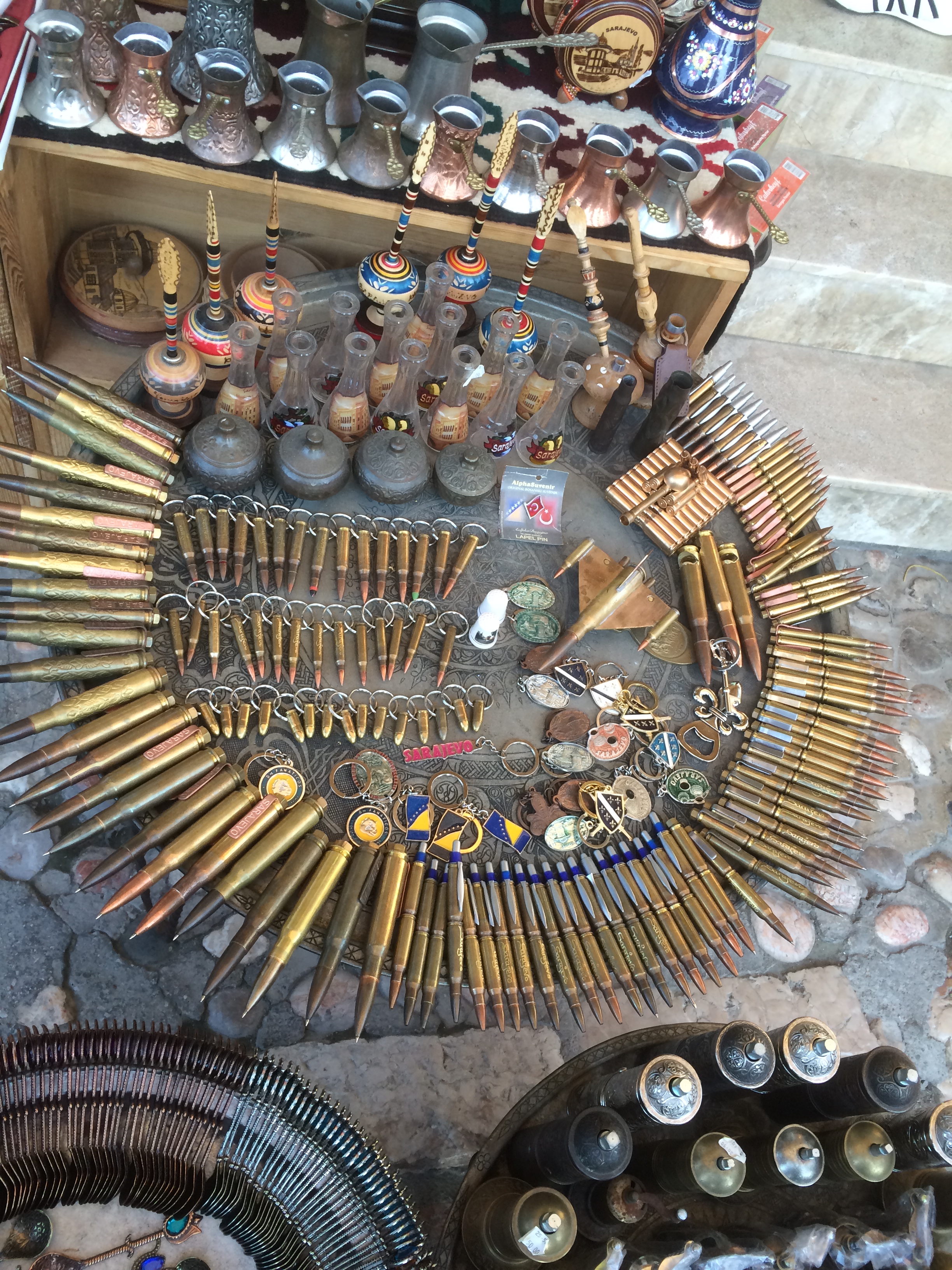
Souvenir Shells and the Scars of Sarajevo
BY OLIVIA BURTON
Our walking tour of Sarajevo began on seemingly uninteresting street corner. Jusuf, our guide, herded us to the sidewalk and then knelt down in the road. “This is where Franz Ferdinand was shot,” he said. “Any questions?”
Besides the 1984 Olympics, Sarajevo is most famous for an assassination and a siege. Many tourists find themselves drawn to the lingering ghosts of Sarajevo’s dark past among faded buildings pockmarked by shell blasts and tattooed with graffiti.
“The next 15 minutes are the dark tourism part of the tour,” said Jusuf. We had circled around what is known as a Sarajevo Rose, a shell blast from the siege that has been filled with blood-red resin. Sarajevo Roses scar the roads and sidewalks throughout the city, marking the places where a shell blast or grenade killed one or more people.
Some components of dark tourism, including Sarajevo Roses, are monuments to the suffering that occurred during the longest siege in modern warfare. But as with other forms of tourism, commercialization of a city’s history and culture can lead to a loss of authenticity, misconceptions, and irreverence.
Walking through the Baščaršija market, I found a store selling pens, toy planes, and model tanks made out of empty shells picked up during the siege. “What are these?” I asked the shopkeeper. “Shells from the war,” she responded. “Who made them?” “Oh, I don’t know. Some artist?”
Would it have been irreverent to buy one? The shopkeeper did not seem to be bothered by the weapons-turned-souvenirs, but I found it difficult to imagine buying one and displaying it on a bookshelf.

Dark tourism treads a fine line between education and over-commercialization. Sarajevo Roses serve as physical history and as memento mori, reminders of human mortality. Their name contrasts the beauty of a rose with the tragedies of a siege. Sarajevo Roses integrate the dark history of the city into its physical landscape, serving as constant reminders of the siege. But cheap souvenirs seem more like an attempt to capitalize on the memory of suffering.
When I asked Lejla Brčkalija of the Tourism Association of Bosnia and Herzegovina if dark tourism leads to misconceptions about Bosnia, she said that people tend to come with preconceived ideas about the dark history of the city and leave having seen a beautiful country with friendly people and amazing food.
She later told me that the tourism industry is a form of storytelling: “If you are going to make a brochure, you use the most beautiful pictures you have. It applies to stories as well.”
If tourism is a form of storytelling, then it requires the efforts of locals and visitors to tell and interpret the story. Both the Sarajevo Roses and the souvenir shells can be interpreted as beautiful, educational, morbid, macabre, respectful, or irreverent. They are simply different ways of telling the same story, and it is the job of visitors to read them.
Dark tourism is certainly controversial, but so are some of the most important stories.
Olivia Burton ’18 is in Morse College. Contact her at olivia.burton@yale.edu.